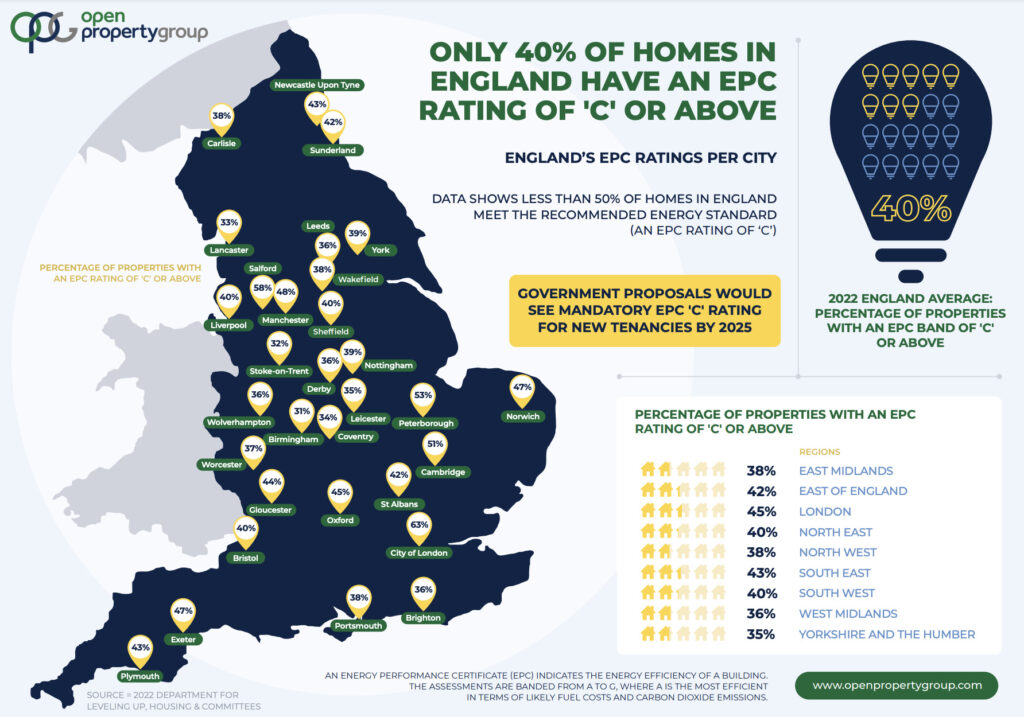New Open Property Group research found that just 40% of homes in England meet the recommended Energy Performance Certificate (EPC) rating of ‘C’.
The EPC scale is ranked from A-G and is used to measure the efficiency of a property based on the level of its emissions, its potential heat or energy loss and its likely fuel costs.
Currently, 63% of properties in the City of London meet the EPC rating of ‘C’ or above. This is closely following by Salford, which has 58% of properties meeting the recommended energy rating and Peterborough, where 53% of its properties are in the band of ‘C’ or above.
At the other end of the scale Birmingham was ranked last, where only 31% of homes meet the target energy rating. Both Stoke-on-Trent and Lancaster also fell below the nationwide average with 32% and 33% of their properties respectively scoring an EPC rating of ‘C’ or above.
In terms of regions across England, London saw 45% of its properties meeting the EPC band of ‘C’ or above. Yorkshire and The Humber was the lowest scoring region on the list, where only 35% of its properties meet the recommended EPC standards of ‘C’.
What does this also mean for UK landlords? The Government have proposed a bill where all rental properties would need to meet a compulsory energy performance certificate rating of band “C” on new tenancies by December 2025.

Openpropertygroup.com managing director, Jason Harris-Cohen said: “The Government is proving relentless in its quest to be carbon net zero by 2050.
“Landlords are seen as a soft target and raising the bar in terms of EPC standards feels somewhat unfair. Buy-to-let owners have not long finished ensuring their properties meet the current ‘E’ EPC rating but now face three years of further eco improvements to reach a new ‘C’ target.
“Sadly, the energy efficiency measures required in the near future are the most expensive. Switching to LED light bulbs alone isn’t going to be enough – we’re moving into the territory of solar panels, cavity wall insulation and air source heat pumps.”
“Landlords will seriously have to look at their yields when it comes to profits, margins and financing energy efficiency works. Some of the UK’s biggest cities – Leeds, Birmingham and Brighton – have some of the biggest issues with poor EPC ratings.
“Once the sums are done, many landlords will find they won’t be able to recoup any eco investments, especially if their local area can’t tolerate increased rents.”
“The UK’s ageing housing stock also presents an issue, with period and pre-war properties falling short when it comes to EPC ratings.
“We forecast a trend towards investing in new homes – especially given that data released by the Government showed that 97% of new homes delivered in the second quarter of 2021 had an EPC rating of C or above.”




